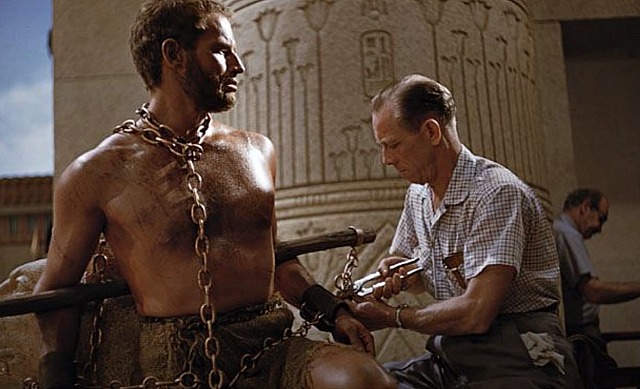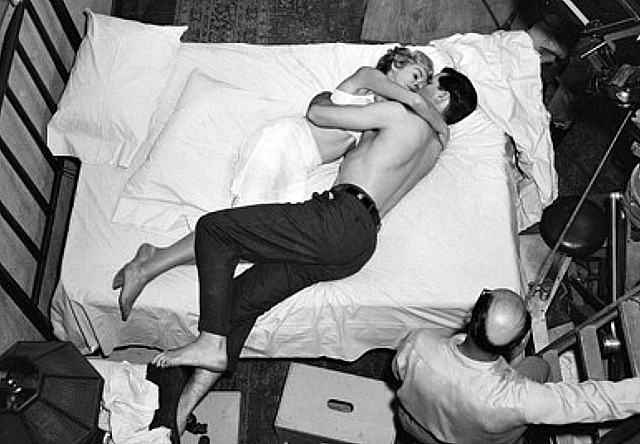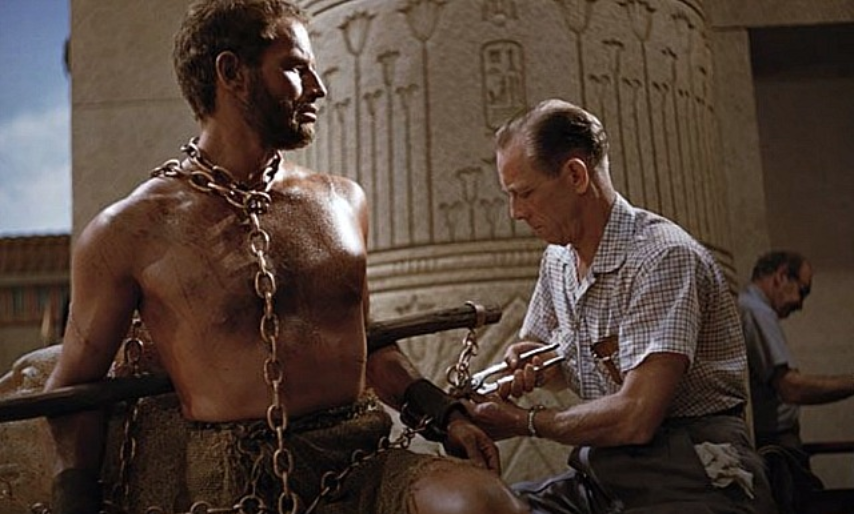All below-the-line people look the same on movie sets — T-shirts, baseball caps, comfort shoes, hoodies, jeans, work boots, mandals with socks.
An electrician or wardrobe person or union carpenter or sound recorder will never dress like, say, Michelangelo Antonioni did on the set of The Passenger or Brian DePalma while shooting Scarface or Dressed To Kill (i.e., safari jacket) or Steven Soderbergh while directing Magic Mike.
Because the below-the-line Hollywood rulebook states they will never step outside the fashion realm of a basic sound-stage grunt. Not a complaint or lament — just how it is.
It was the same way 50 and 60 years ago, only different. Union guys who worked on sound-stage shoots wore the same regulation outfit — (a) a checked short-sleeve sports shirt or long-sleeve business shirt, (b) a pair of baggy, pleated, hand-me-down business pants, and (c) brown or black lace-up shoes with white socks.
On top of which sound stage guys of the ’50s and ’60s were almost always bald or balding. Somewhere between 85% and 90%. And if they had more than a few follicles they always looked like beefy-faced mafiosos or longshoreman from On The Waterfront.
Look at the Ten Commandments guy helping Charlton Heston — like a guy who might have worked at a small-town hardware store or at a shop where they built raw wooden furniture. Look at the bald guy handling the boom mike during the shooting of Psycho.
Hollywood union guys all had this shlubby look…a million guys who looked like the brother or cousin of “Hogeye,” the lighting guy who shined the light on Gloria Swanson in Sunset Boulevard.




